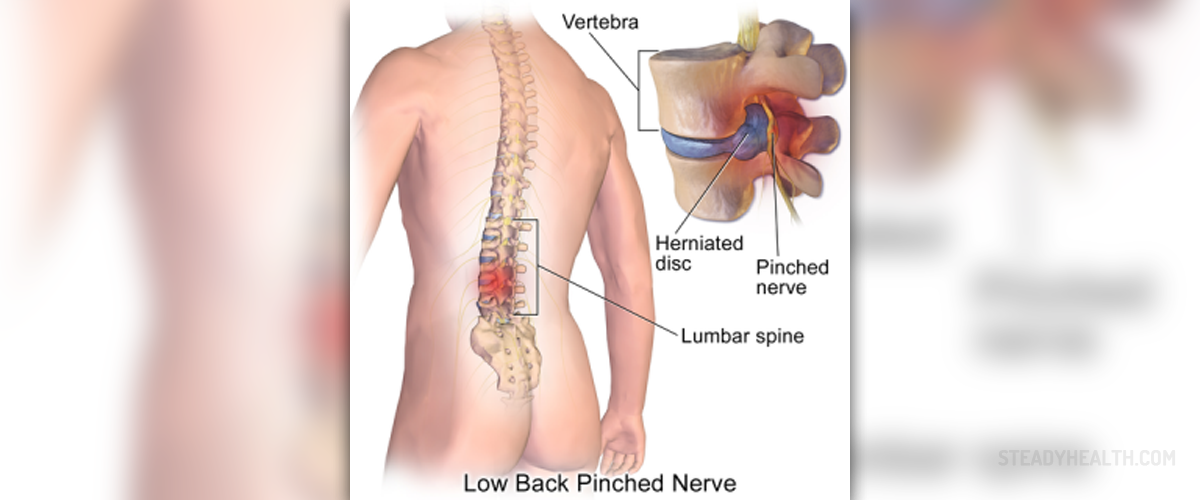
Symptoms of pinched nerve in lower back
The pain of the pinched nerve in the lower back area is not restricted to that area, but it tends to expend down the legs. The pain may also expand to the upper back too. Localized numbness of the lower back may also be a sign of the pinched nerve since the nerves have the role to carry the brain signals, as well as to provide sensations.
Causes of pinched nerve in lower back
Spinal stenosis and herniated disc are the two main causes for the occurrence of the pinched nerve in the lower back. Spinal cord passes through the bones of the spine and there is a gap between the spinal cord and the bone. This gap is actually the spinal canal. If the spinal canal narrows at some place in the lower back, the bones touch the spinal cord and make pressure on it, thus causing the pinched nerve.
There is a disc made of two layers between every two consecutive bones in the spine. Nucleus is the inner layer, while annulus is the outer layer of the disc. When the inner layer makes excessive pressure on the outer layer, the outer layer breaks and the nucleus penetrates into the spinal canal and puts pressure on the nerve, resulting thus in the pinched nerve.
Treatment for pinched nerve in lower back
The most effective home remedy for this condition is a massage. However, the symptoms of the pinched nerve in the lower back can be successfully relieved with painkillers which can be acquired without a prescription. Aspirin and ibuprofen are usually used to ease the pain, but a doctor should be consulted because of the proper dosage since the overdose of these medicines may cause liver problems.
Pinched nerve in the lower back may also be treated by putting cold packs on the lower back for about 15 minutes or by putting heating pads on that area. Pinched nerve is usually easily treated but in some severe cases it can only be cured by a surgery.










-Causes,-Symptoms,-Diagnosis,-Treatment_f_280x120.jpg)






Your thoughts on this
Loading...